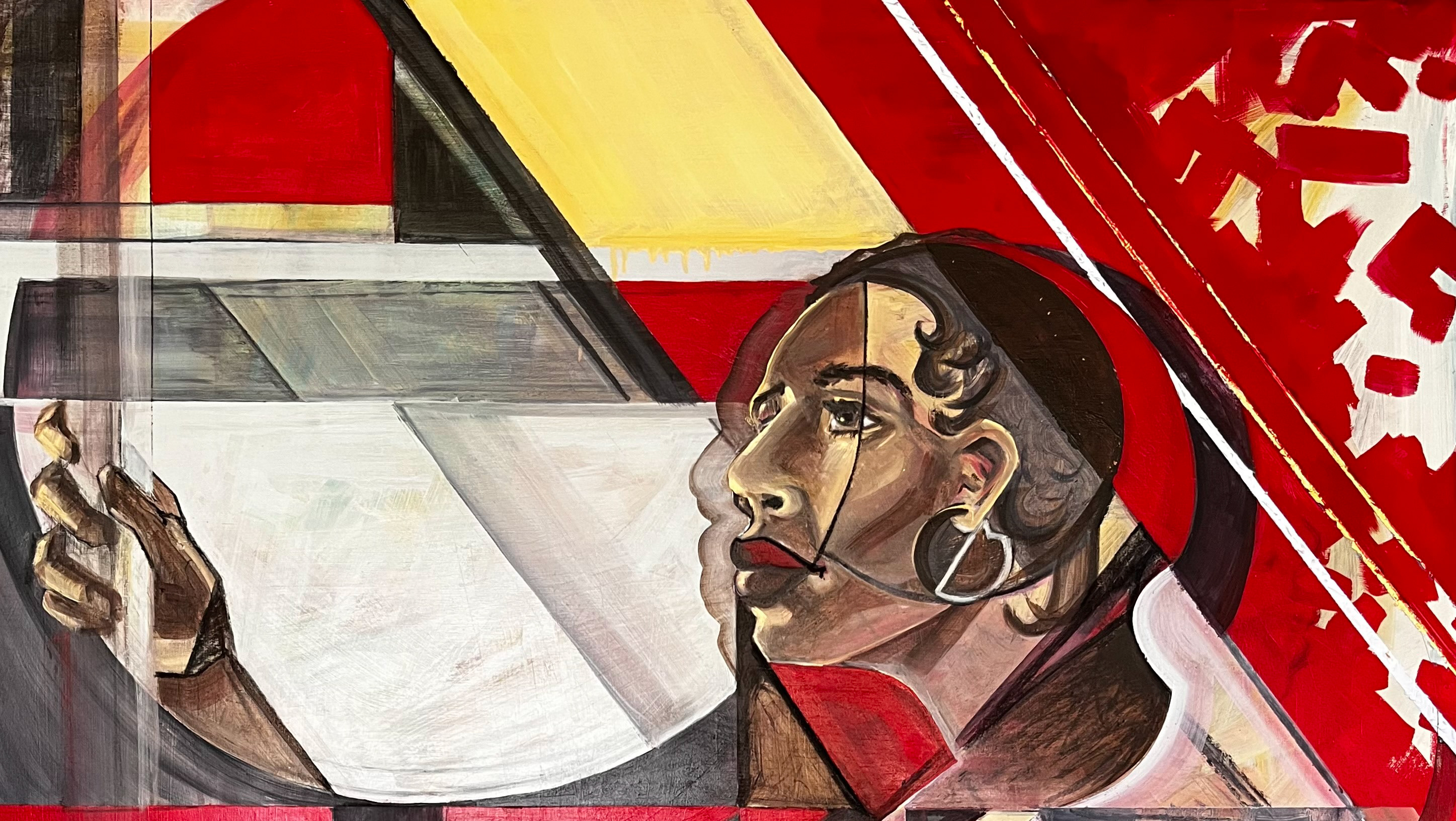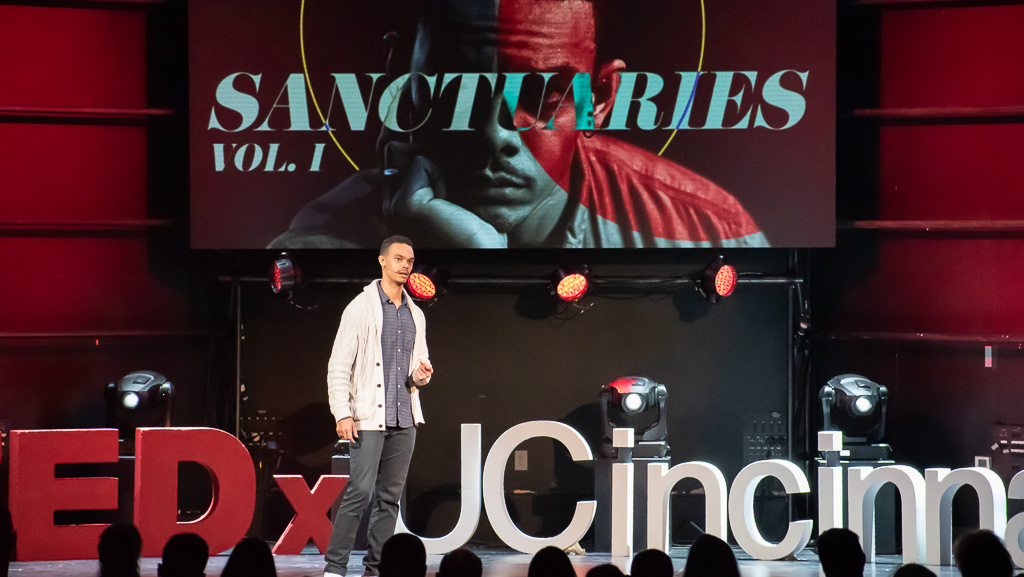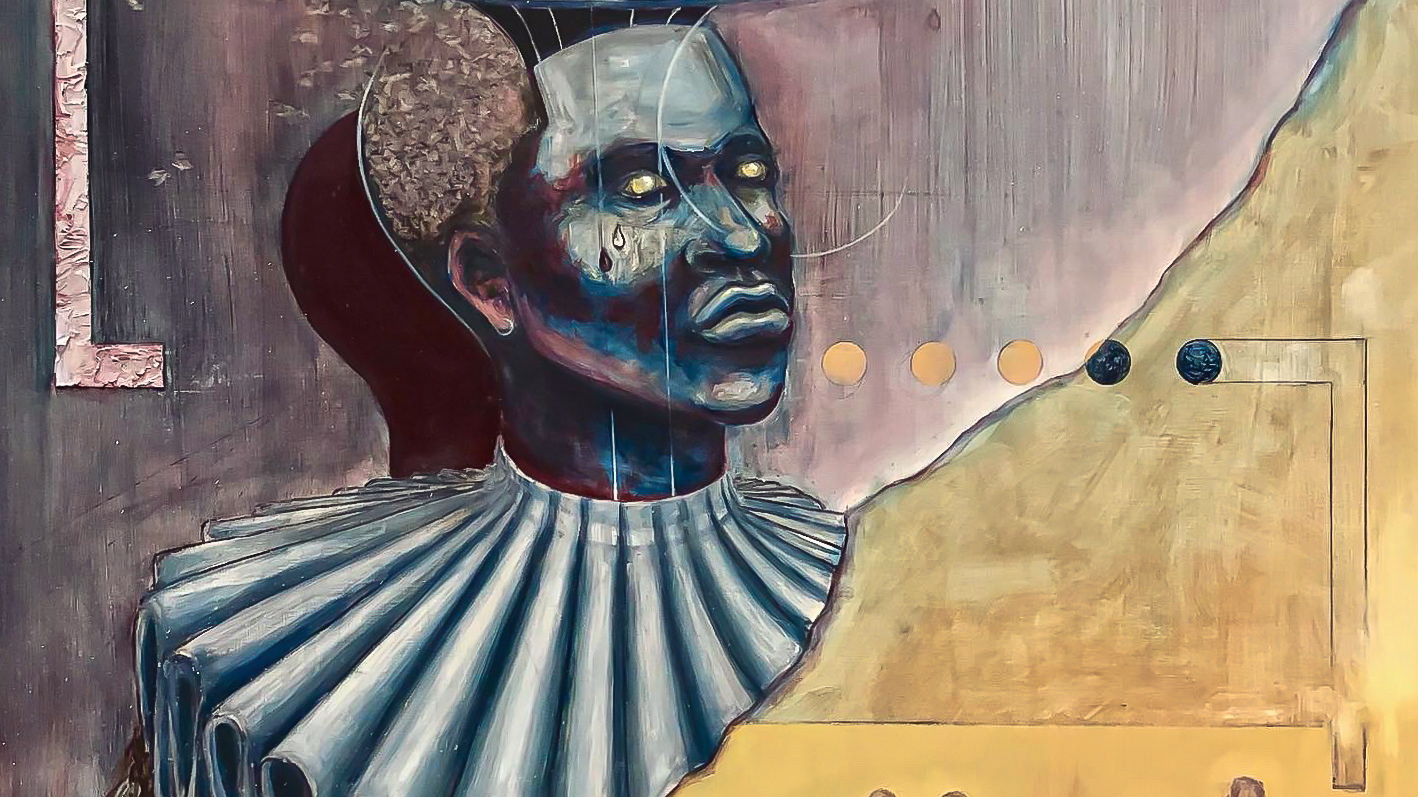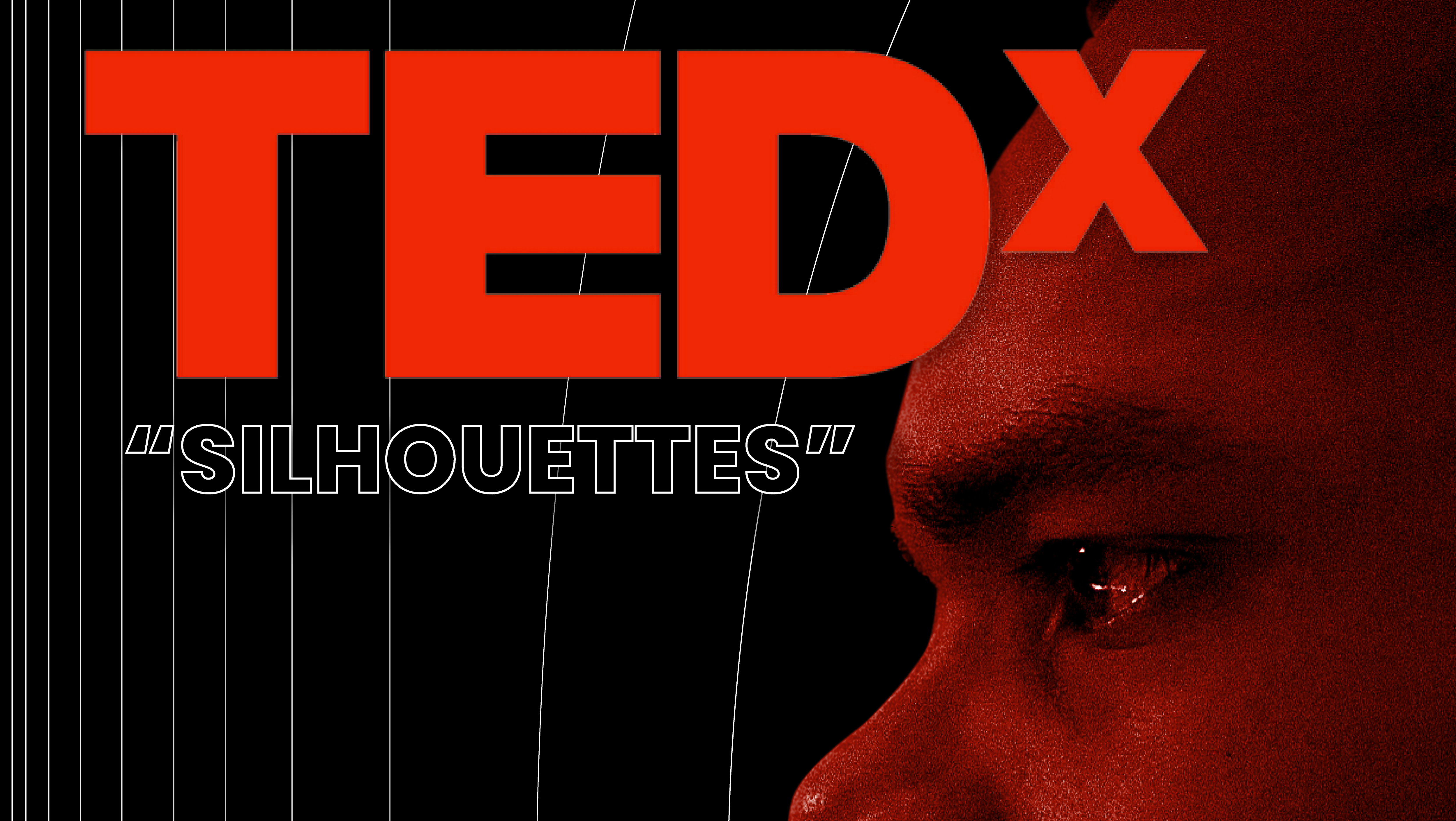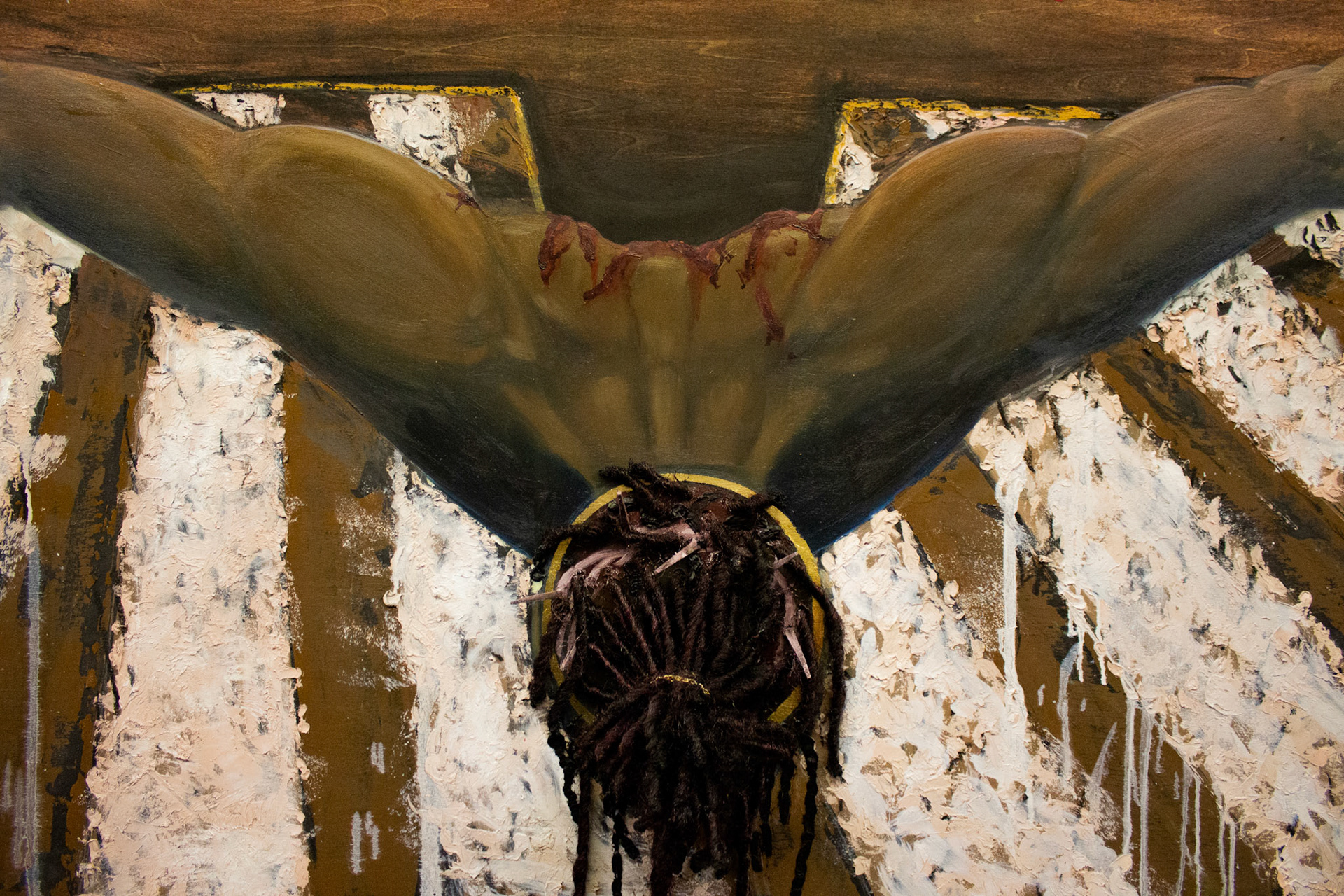
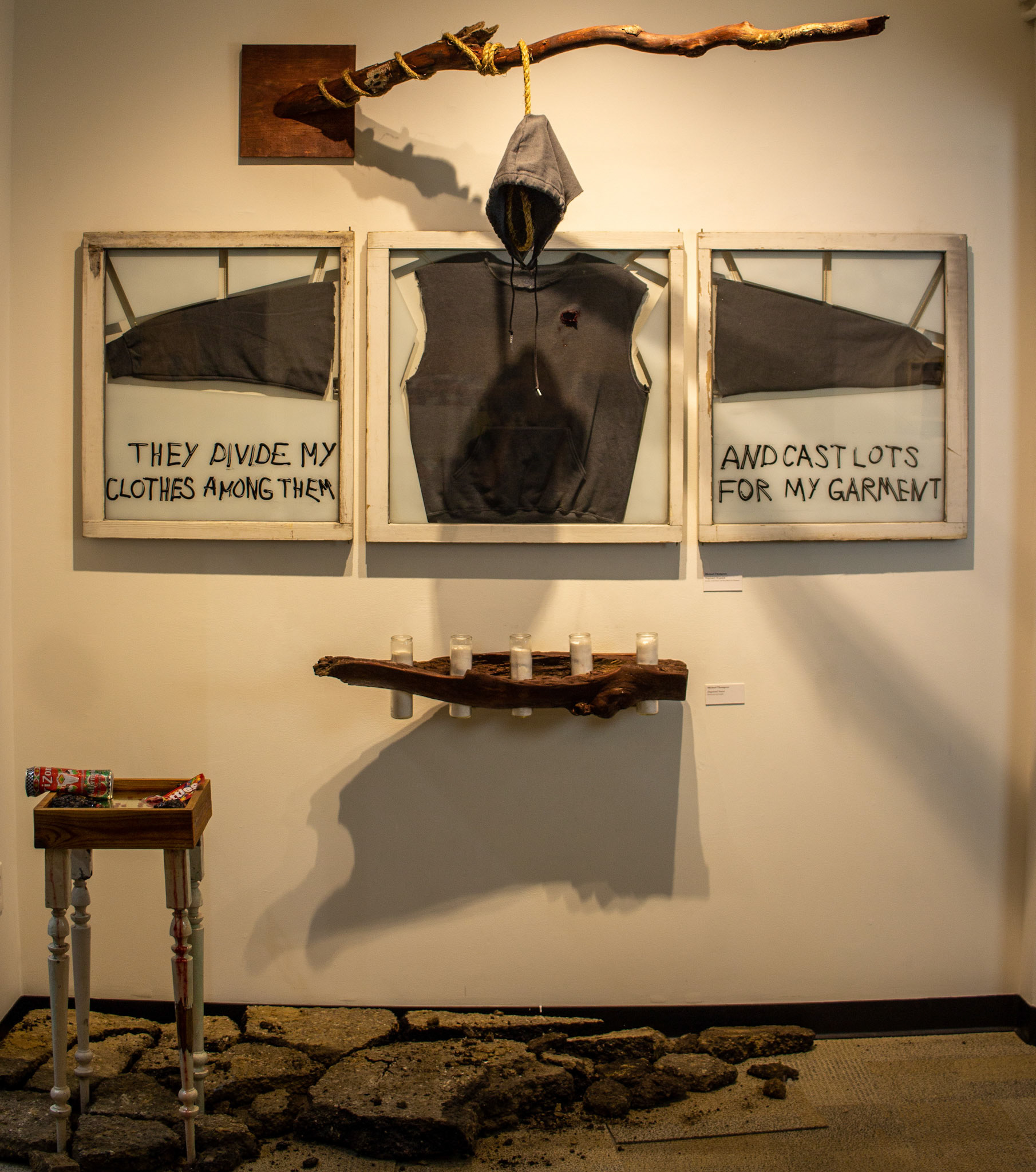
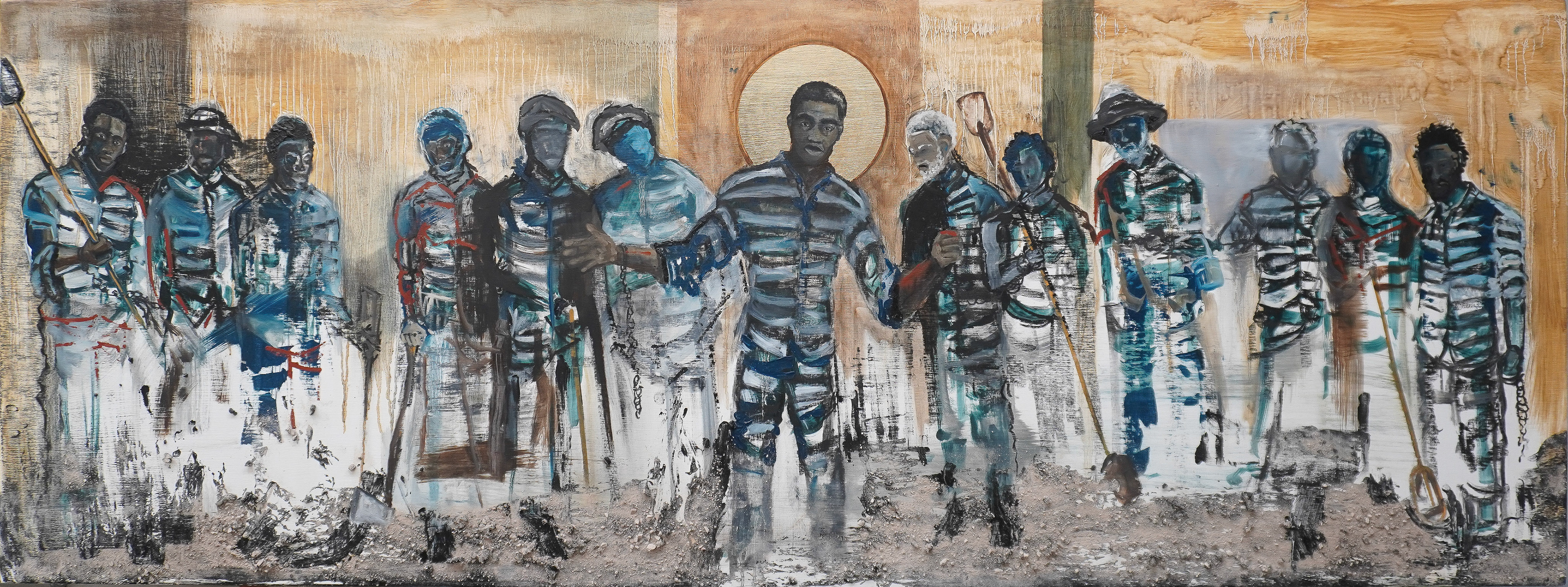
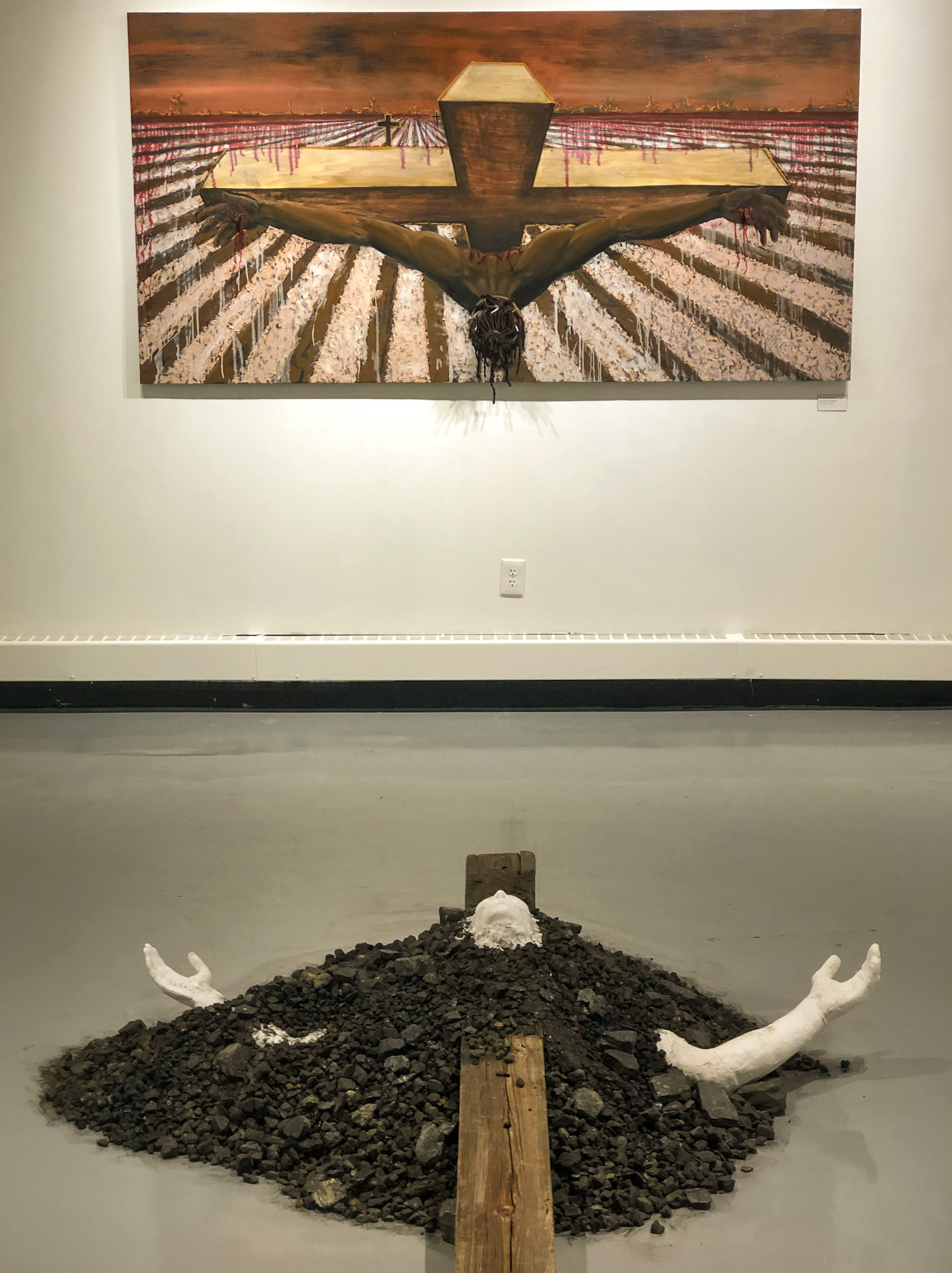
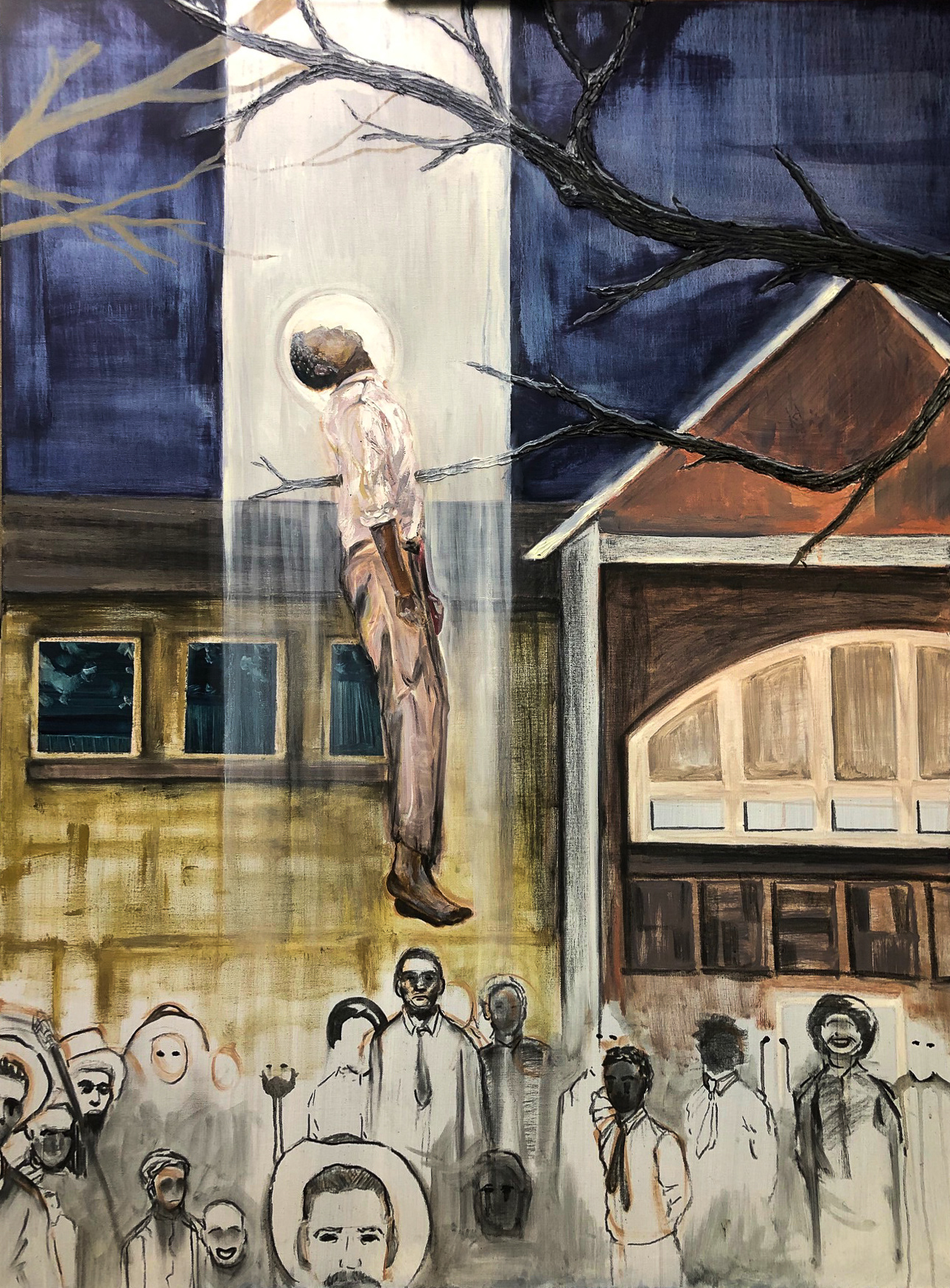
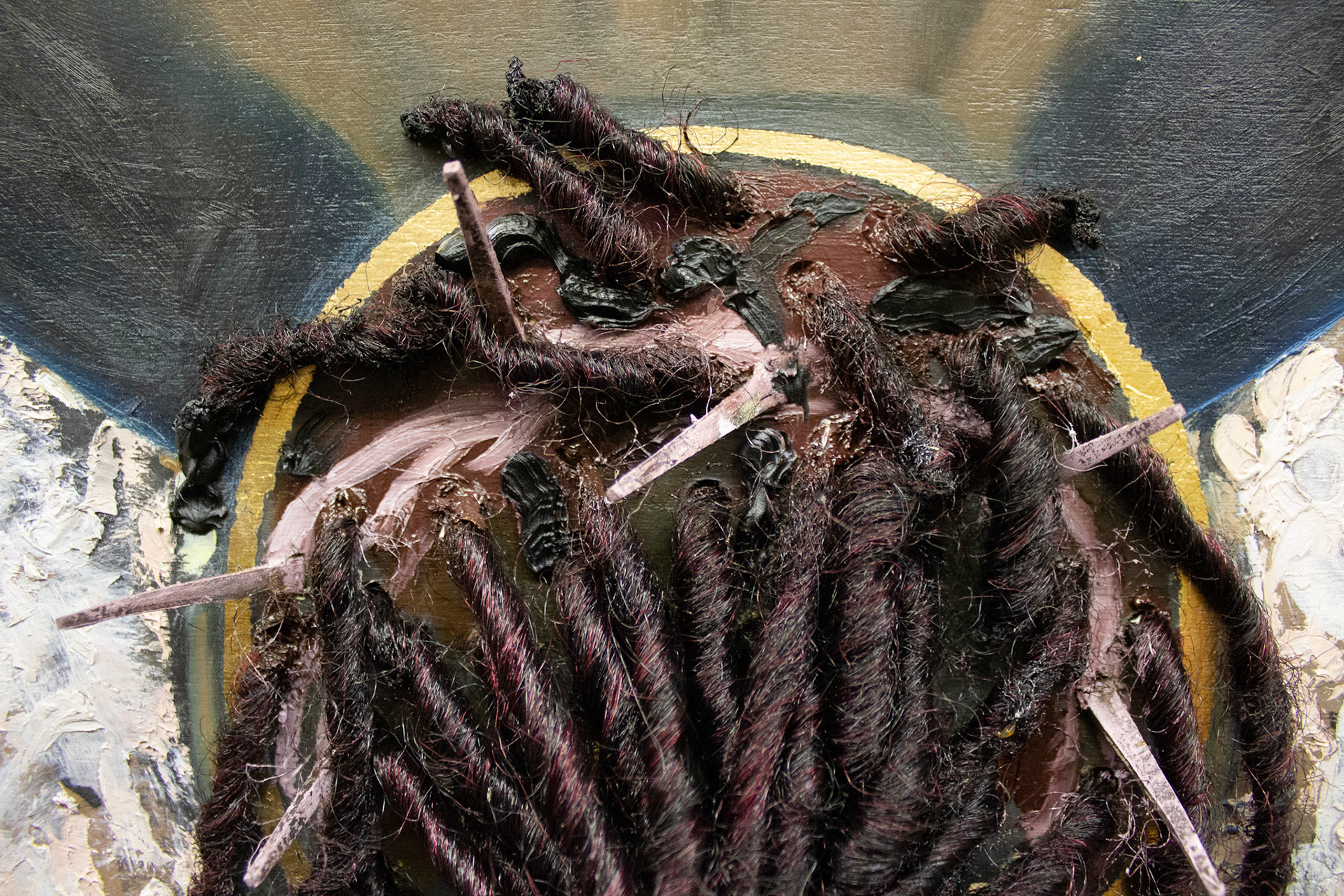

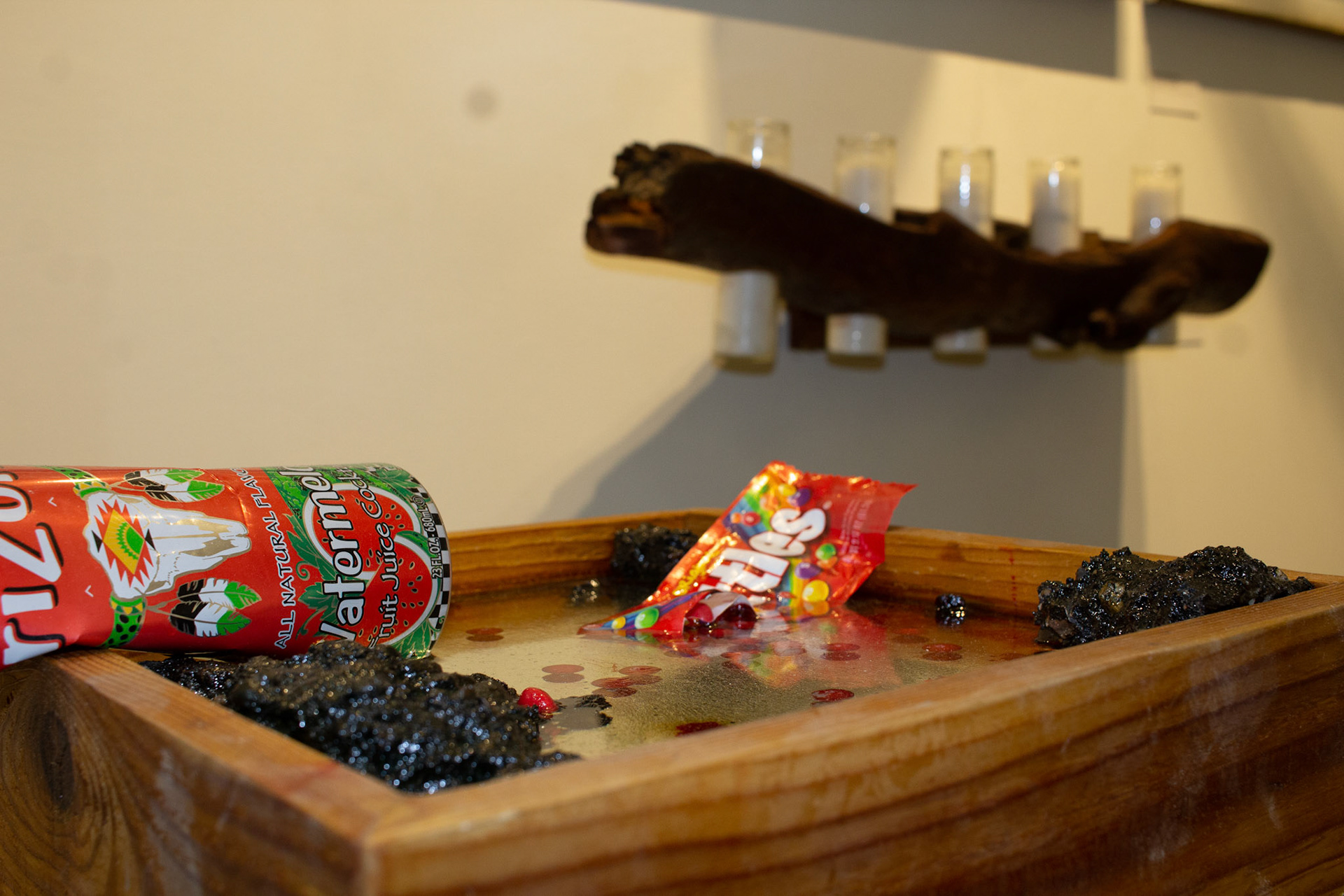
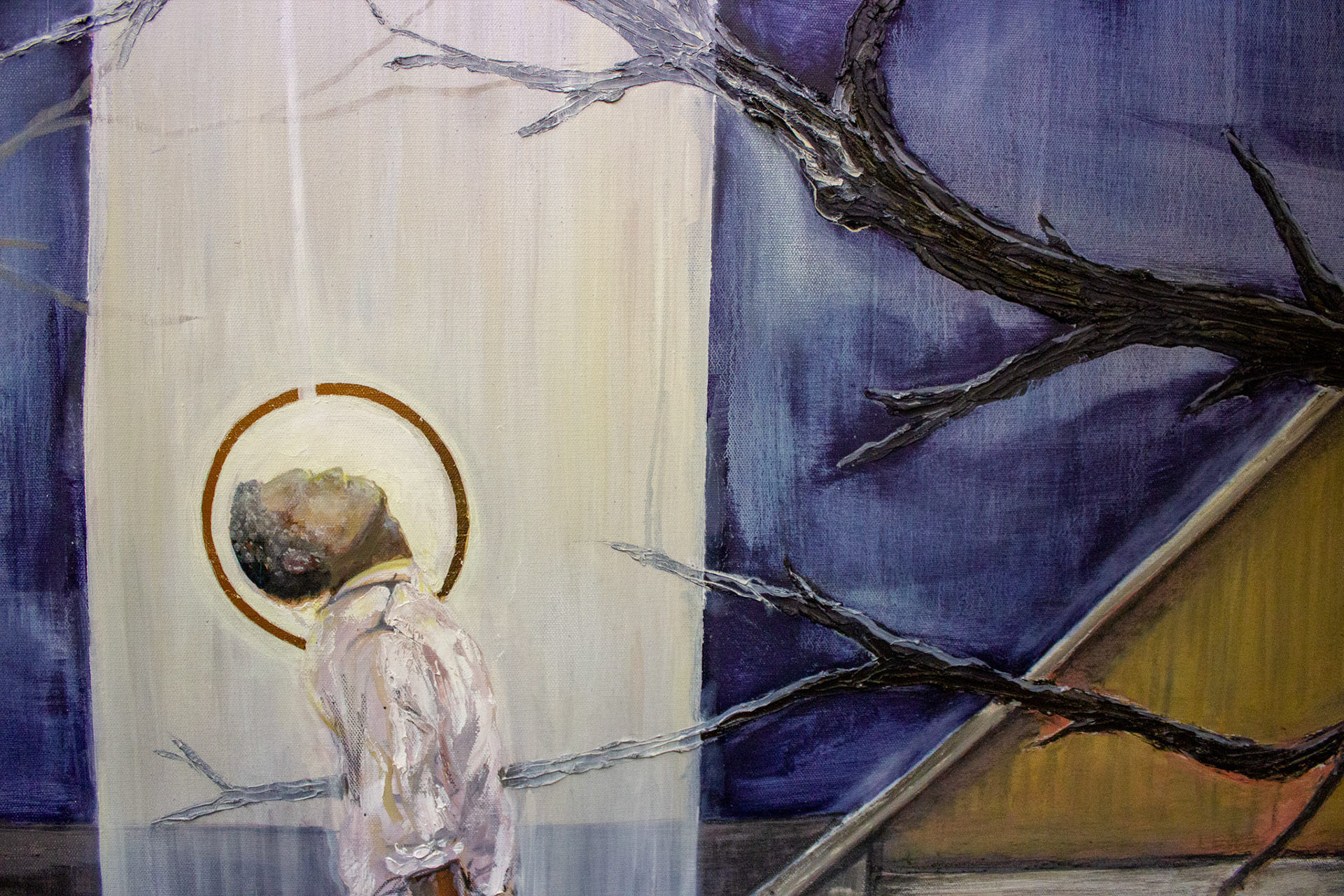
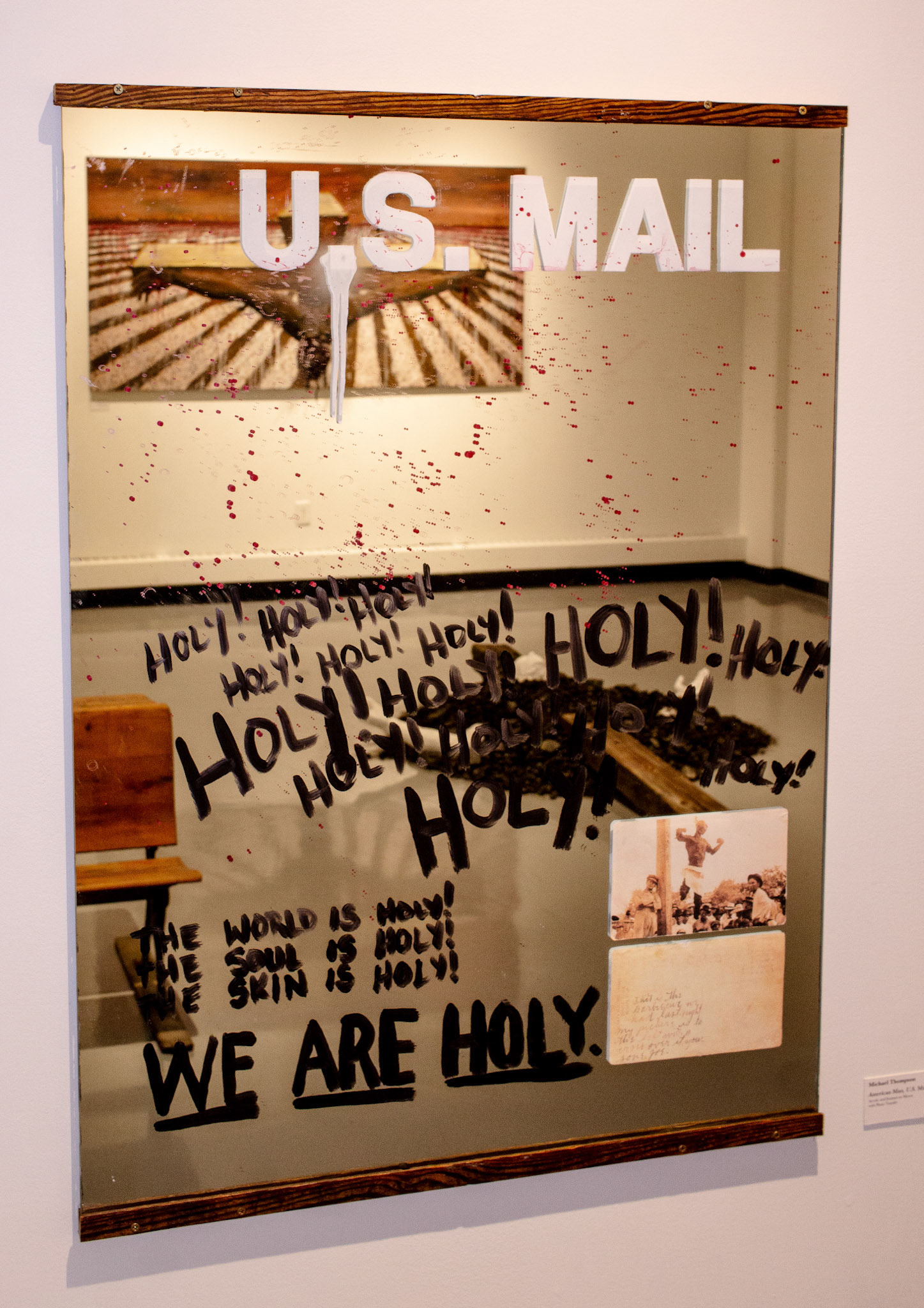
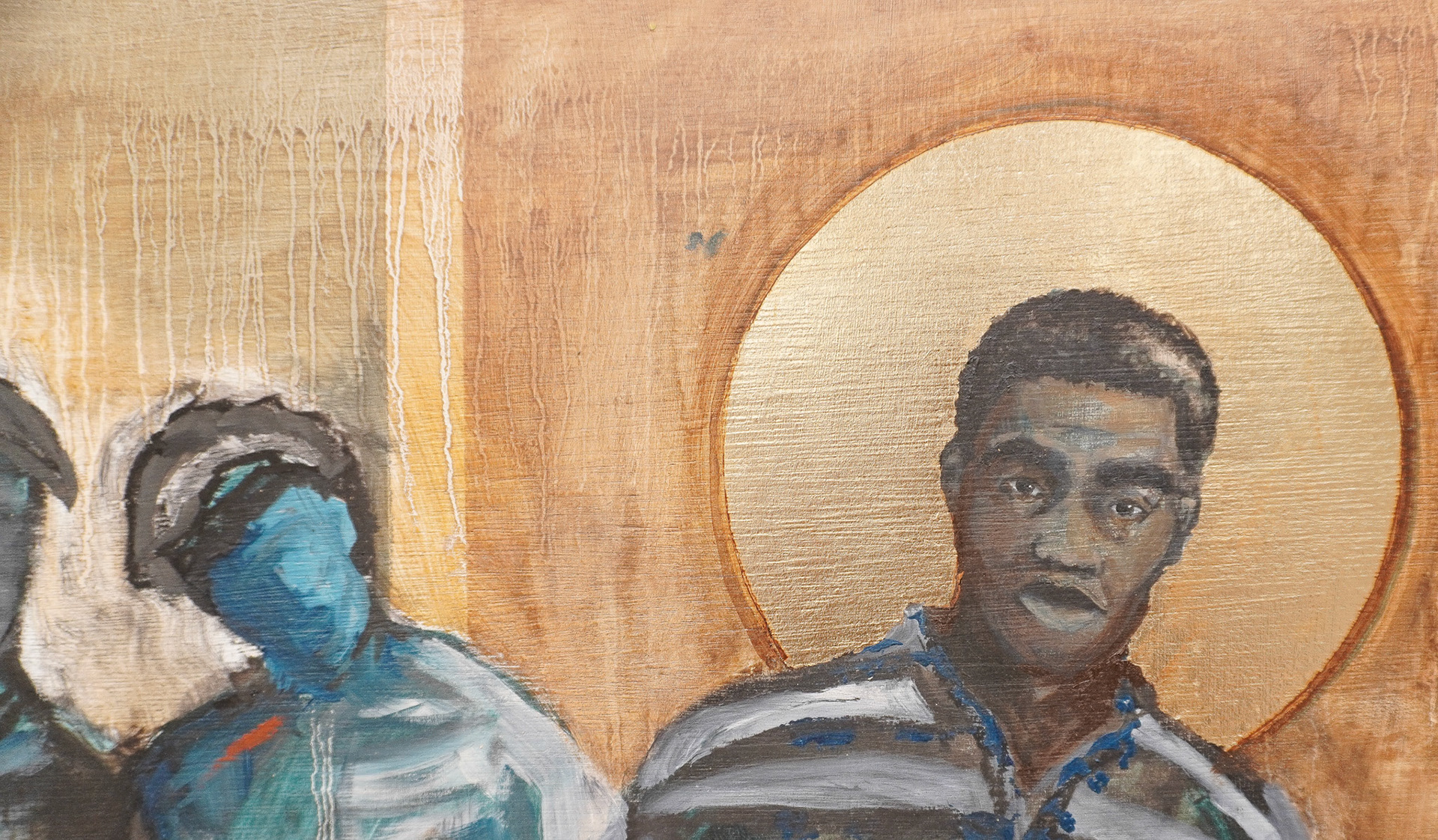
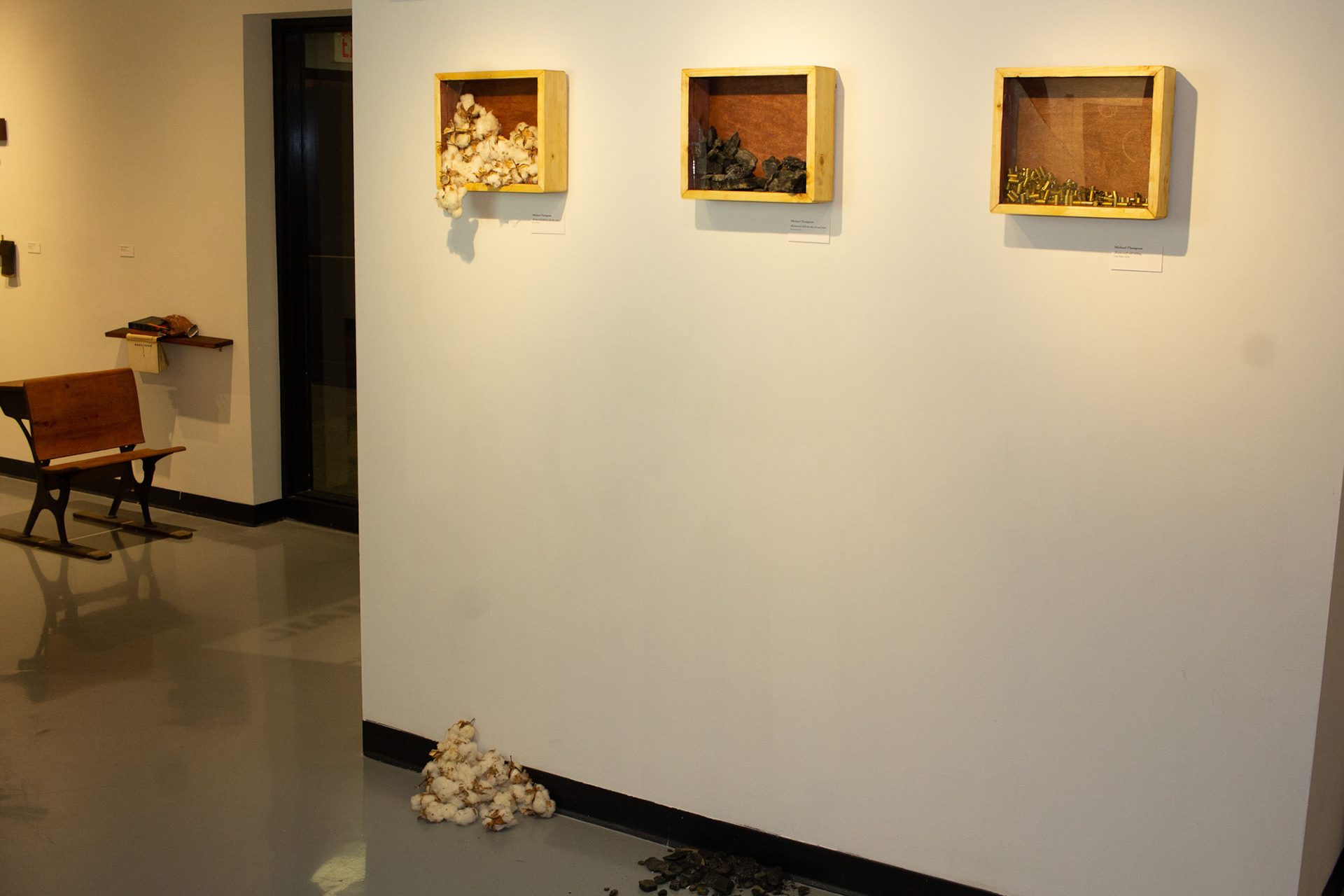
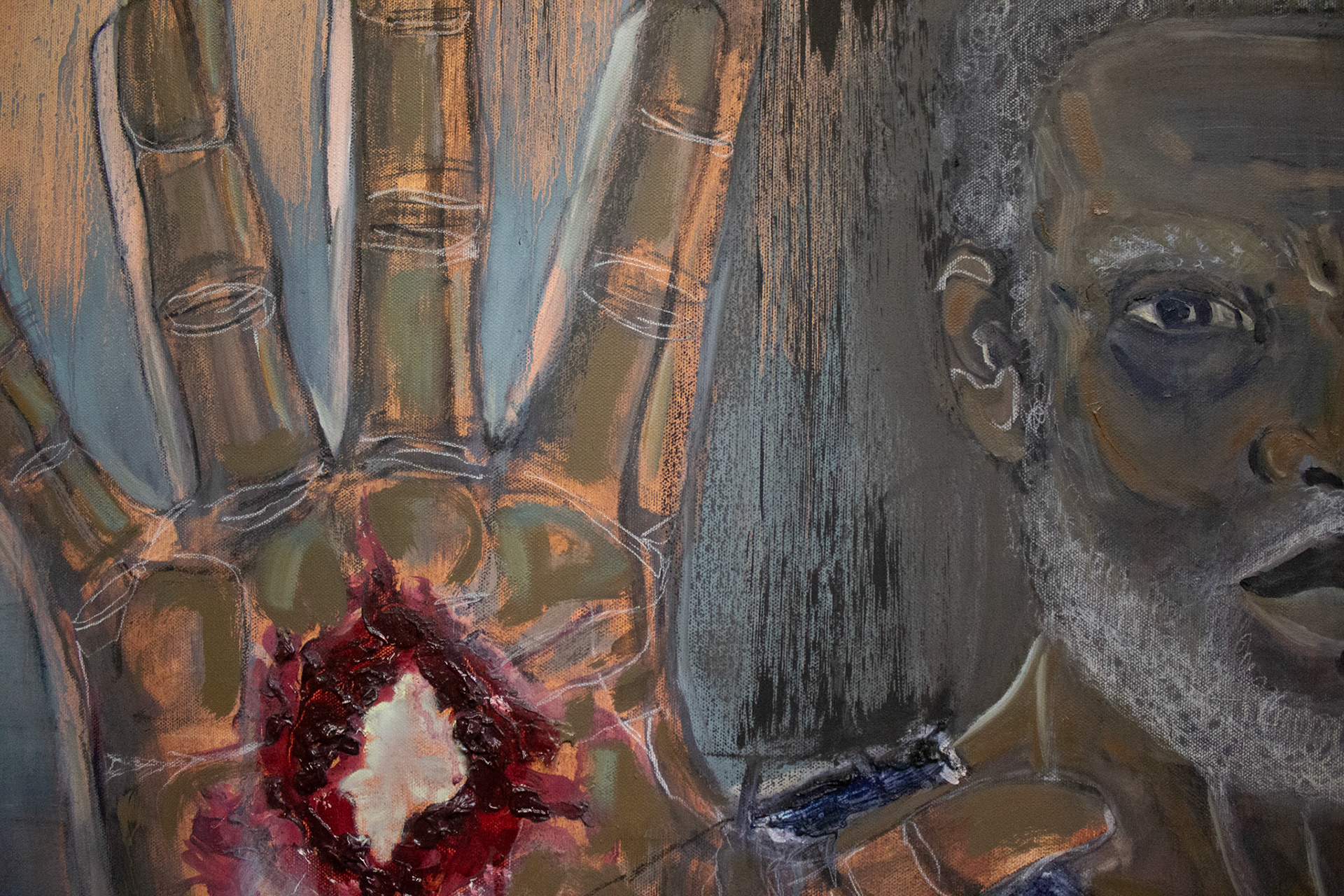
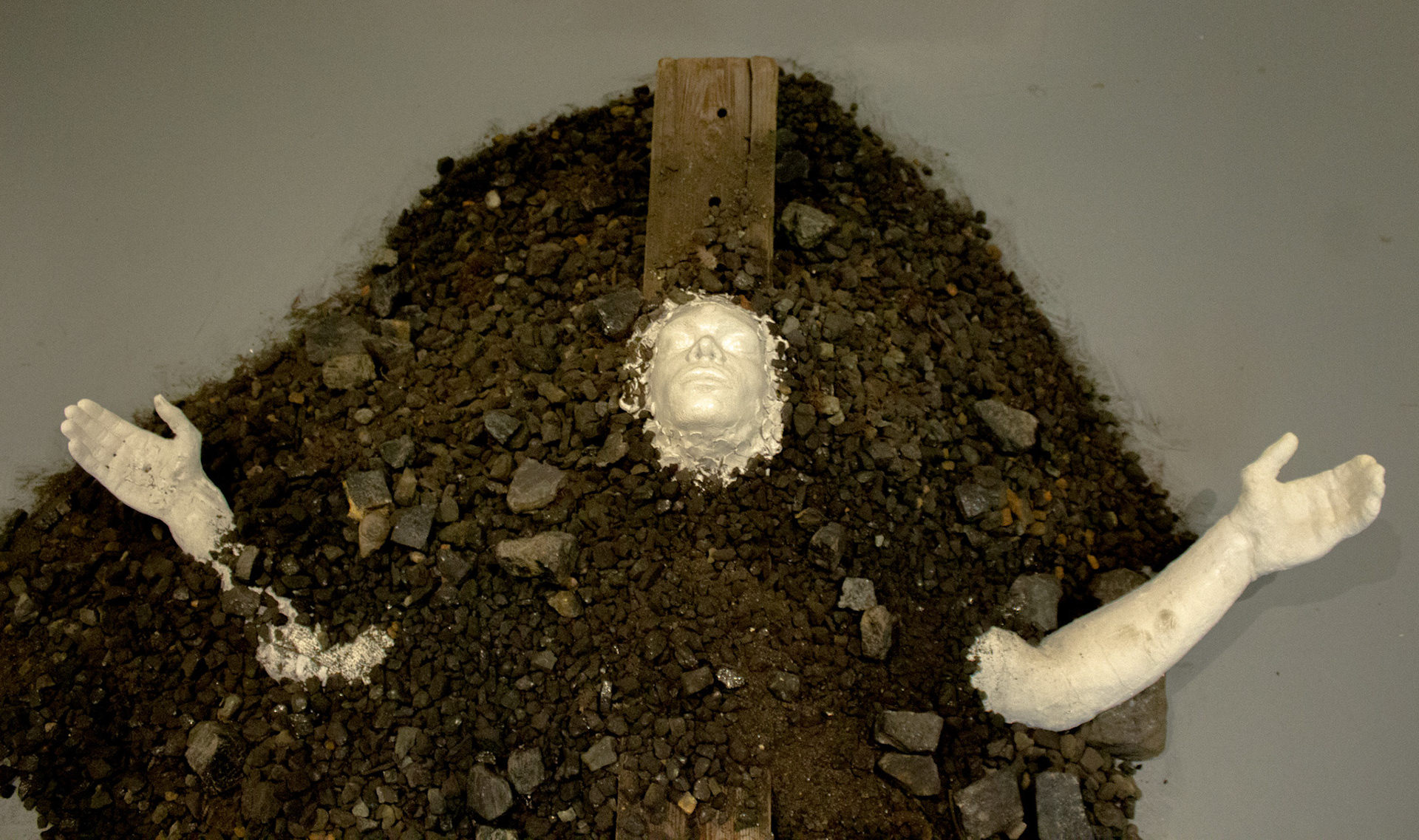
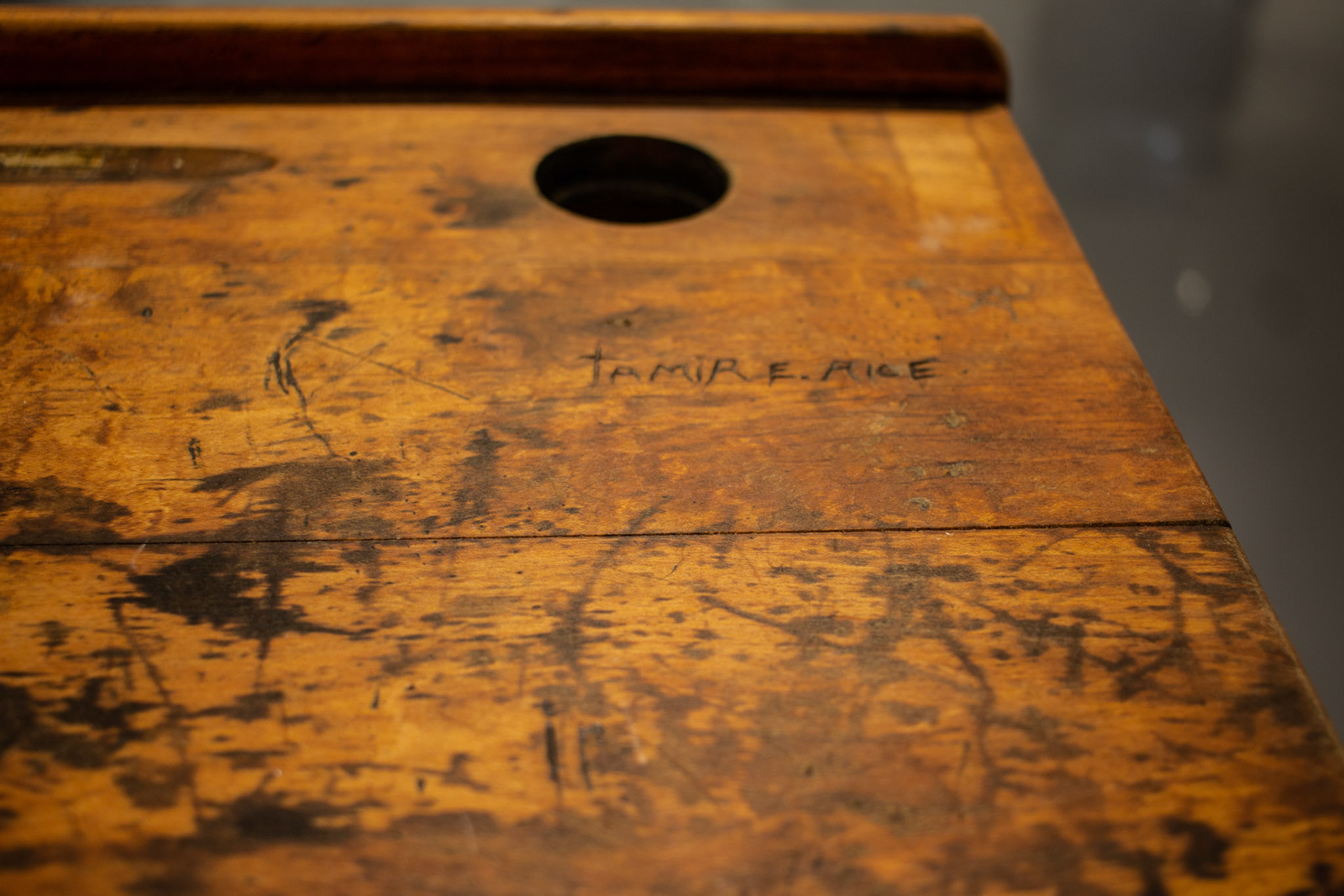
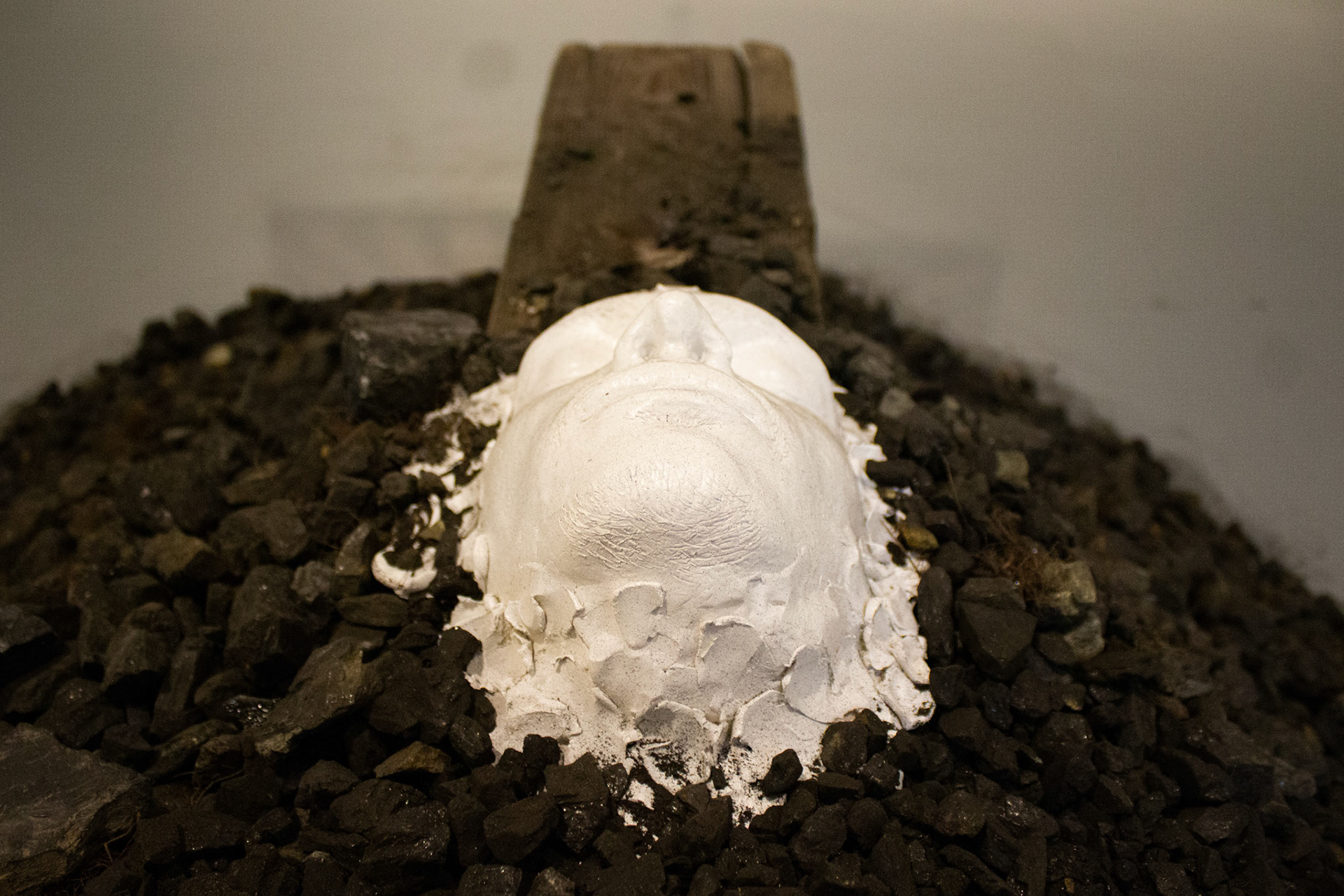
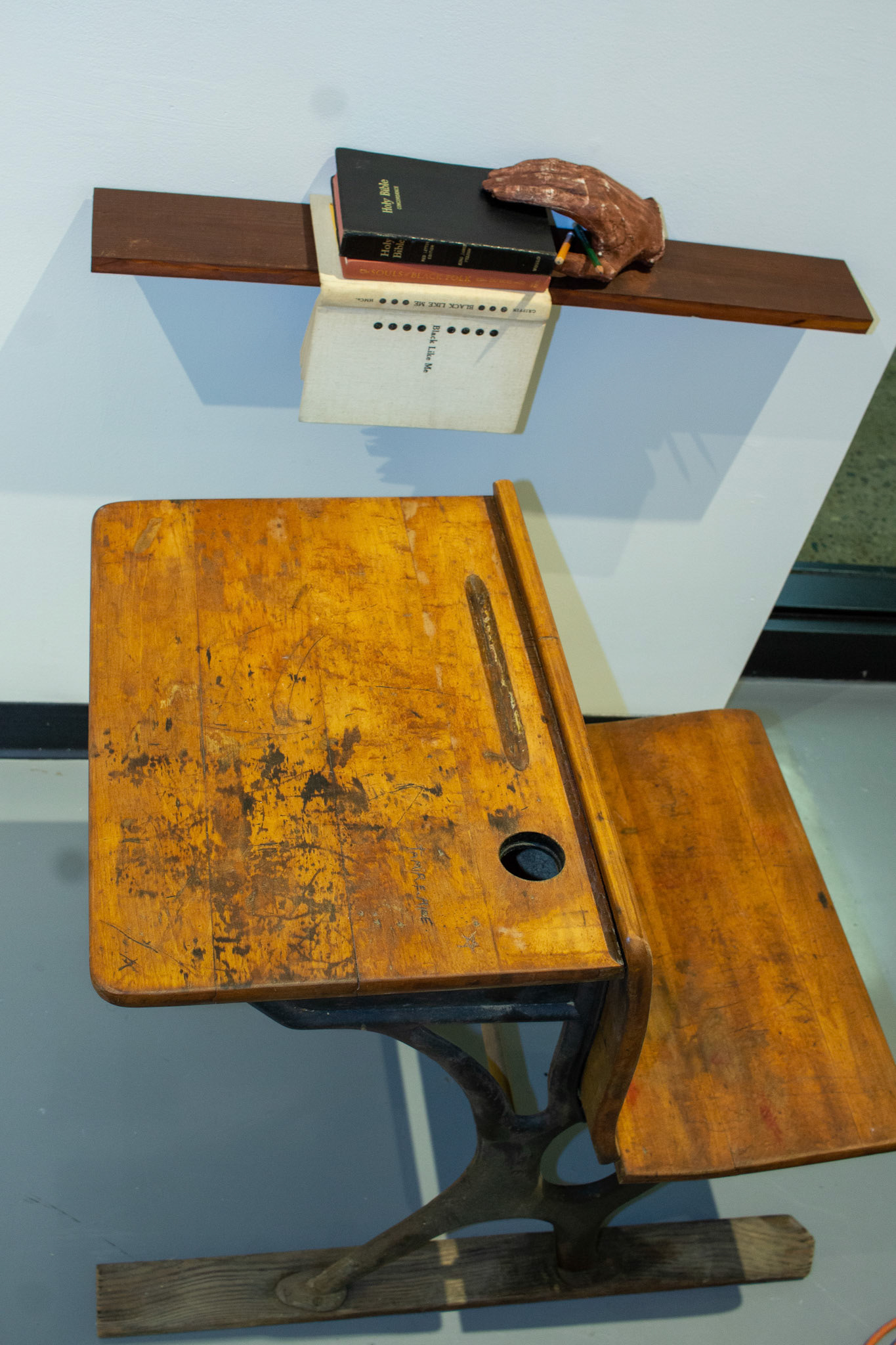
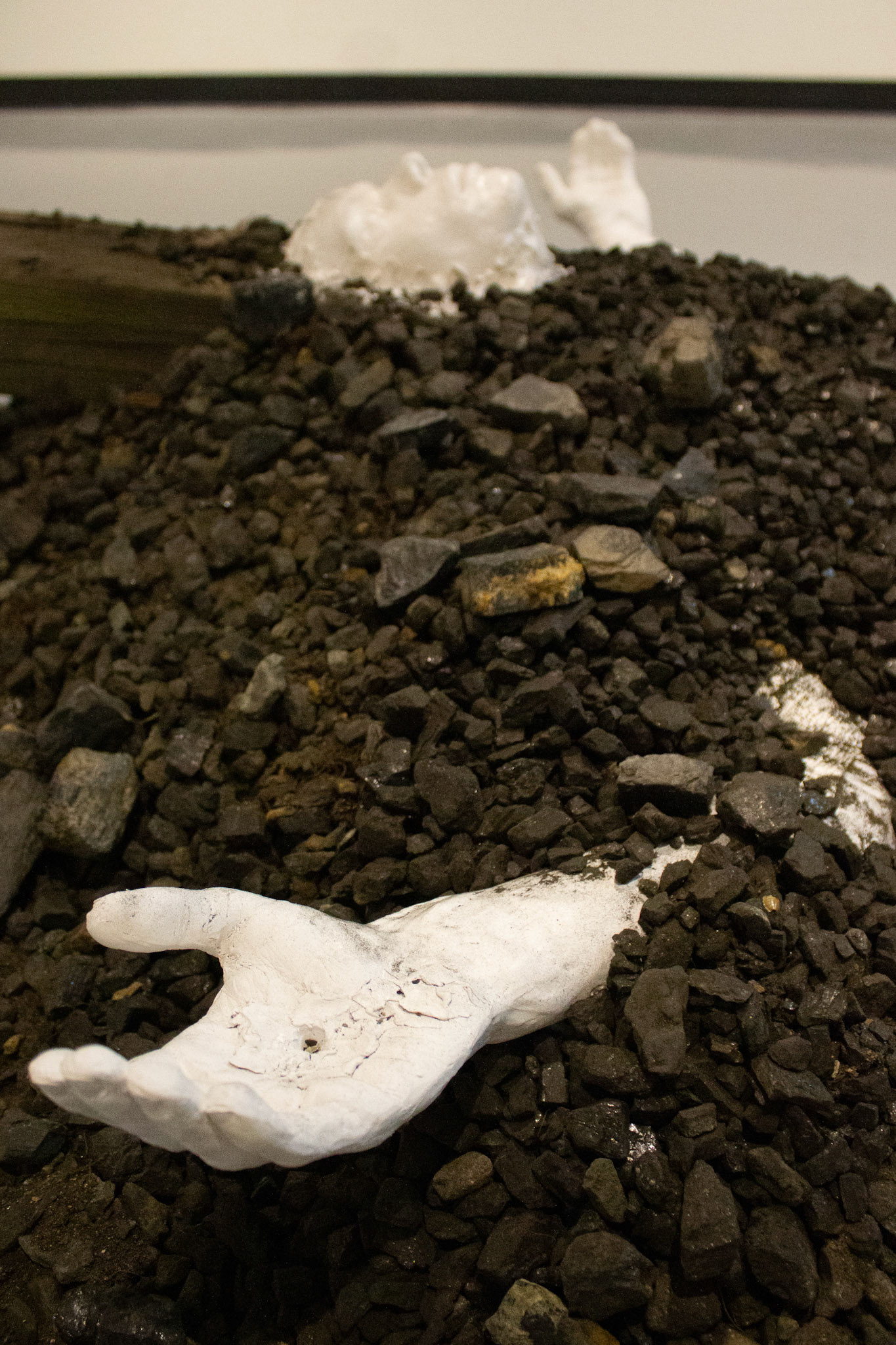
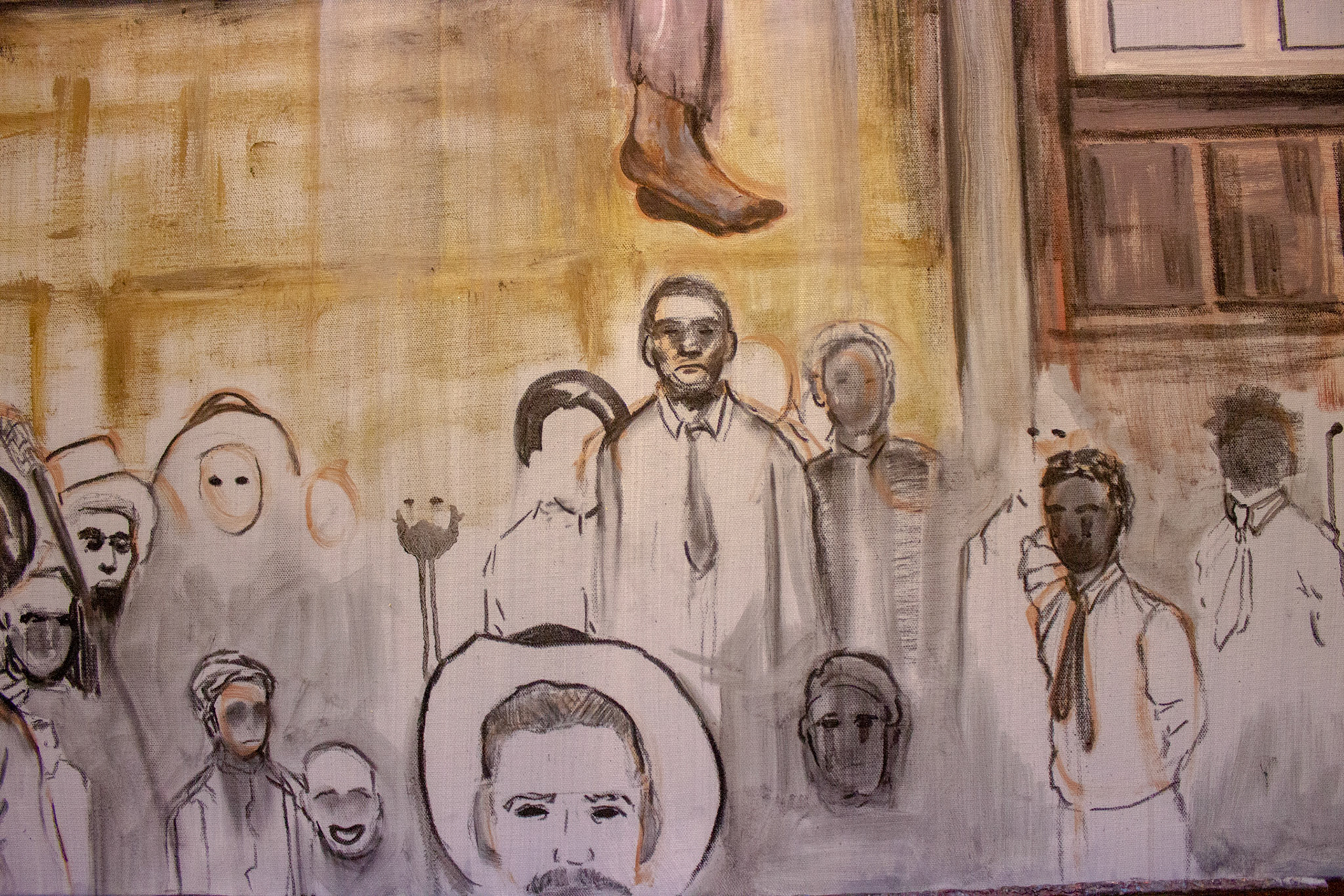
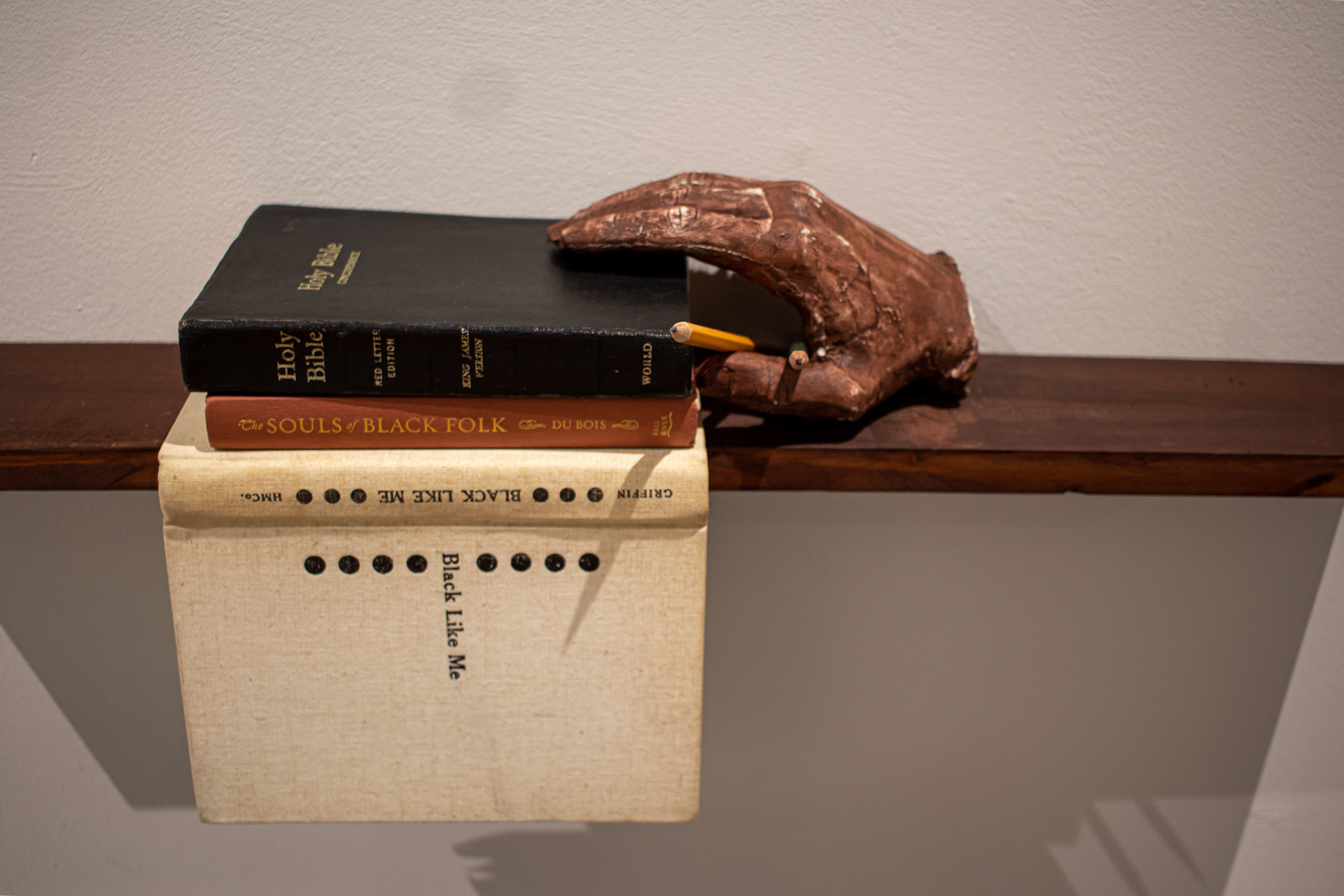
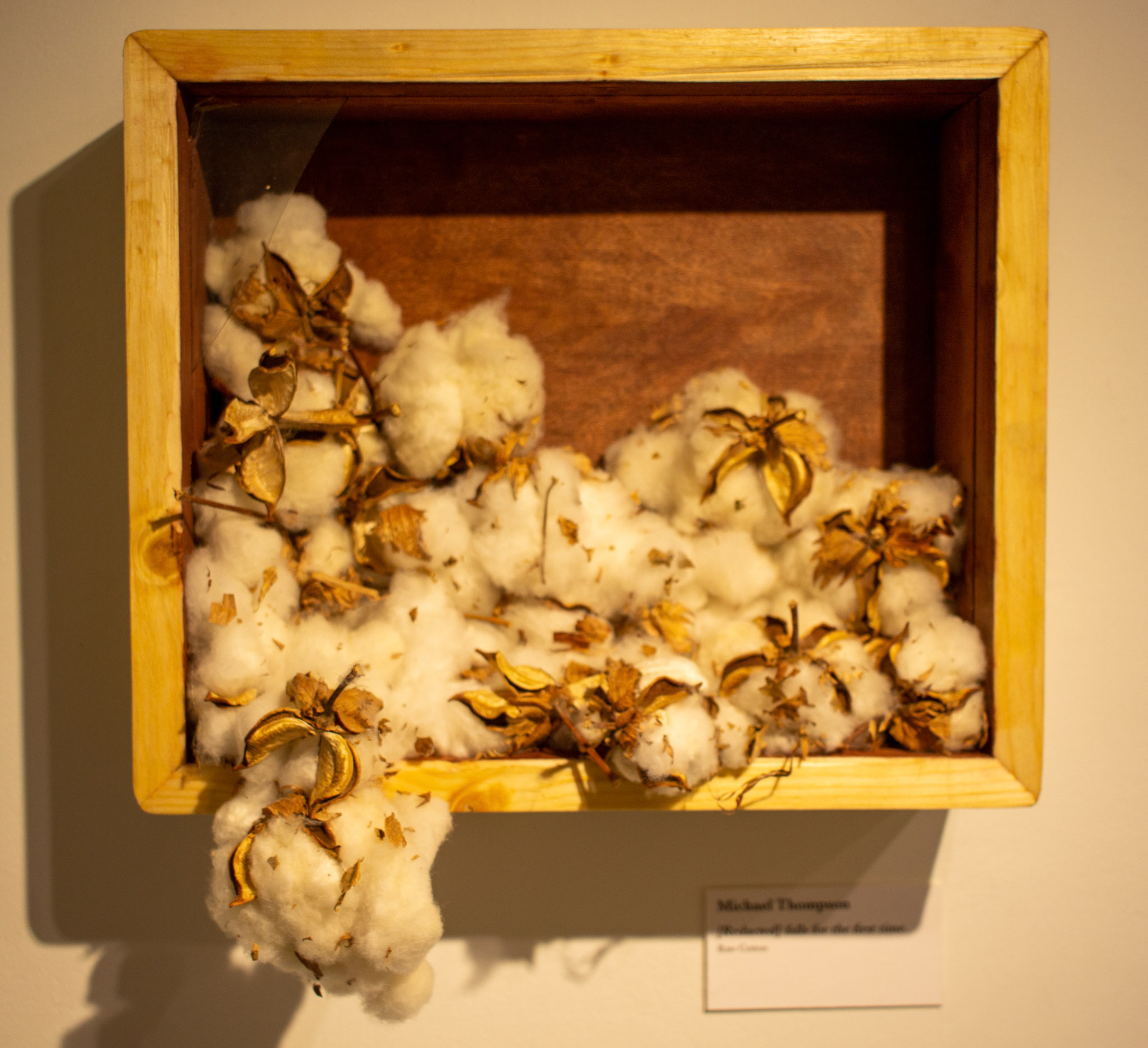
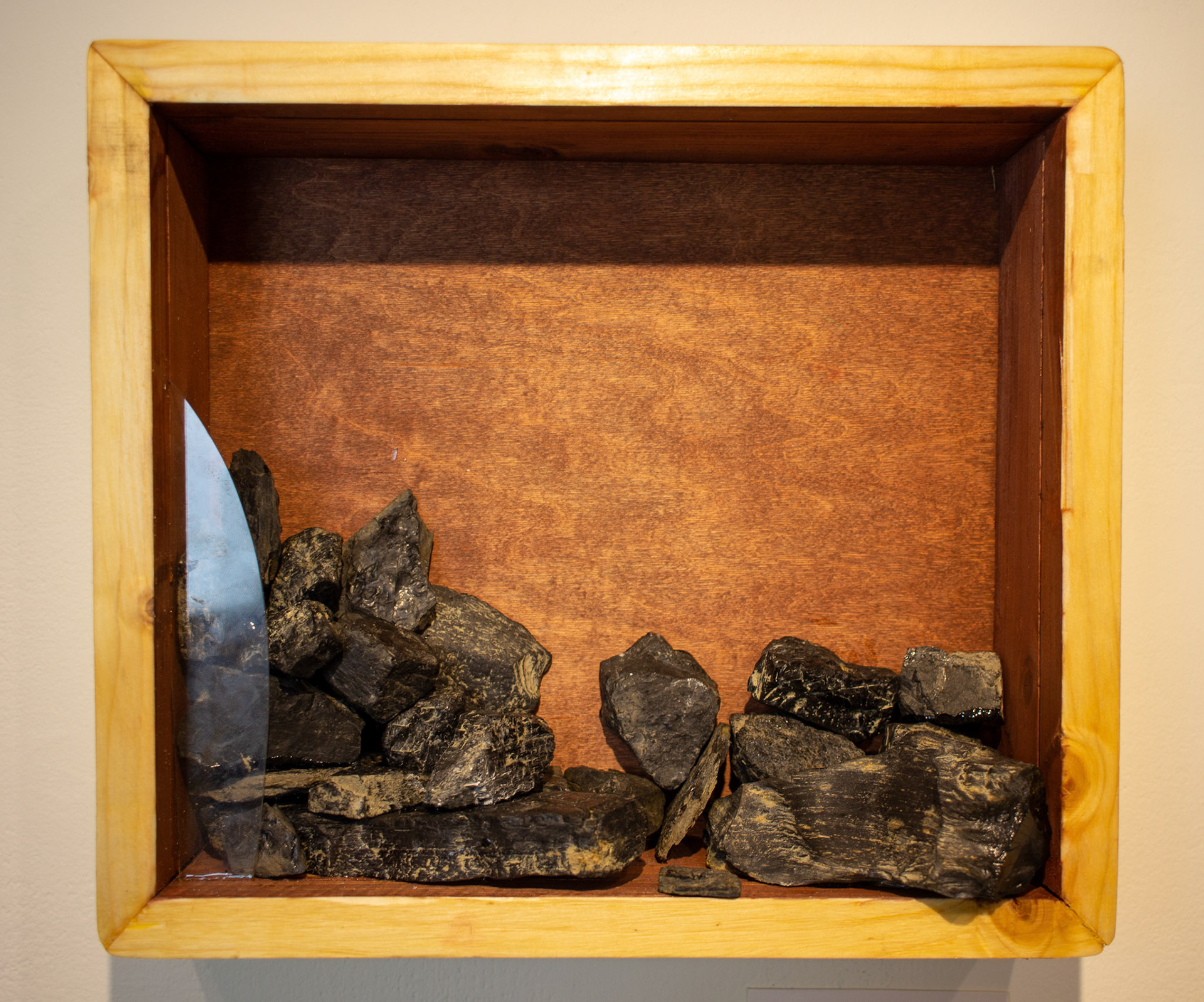
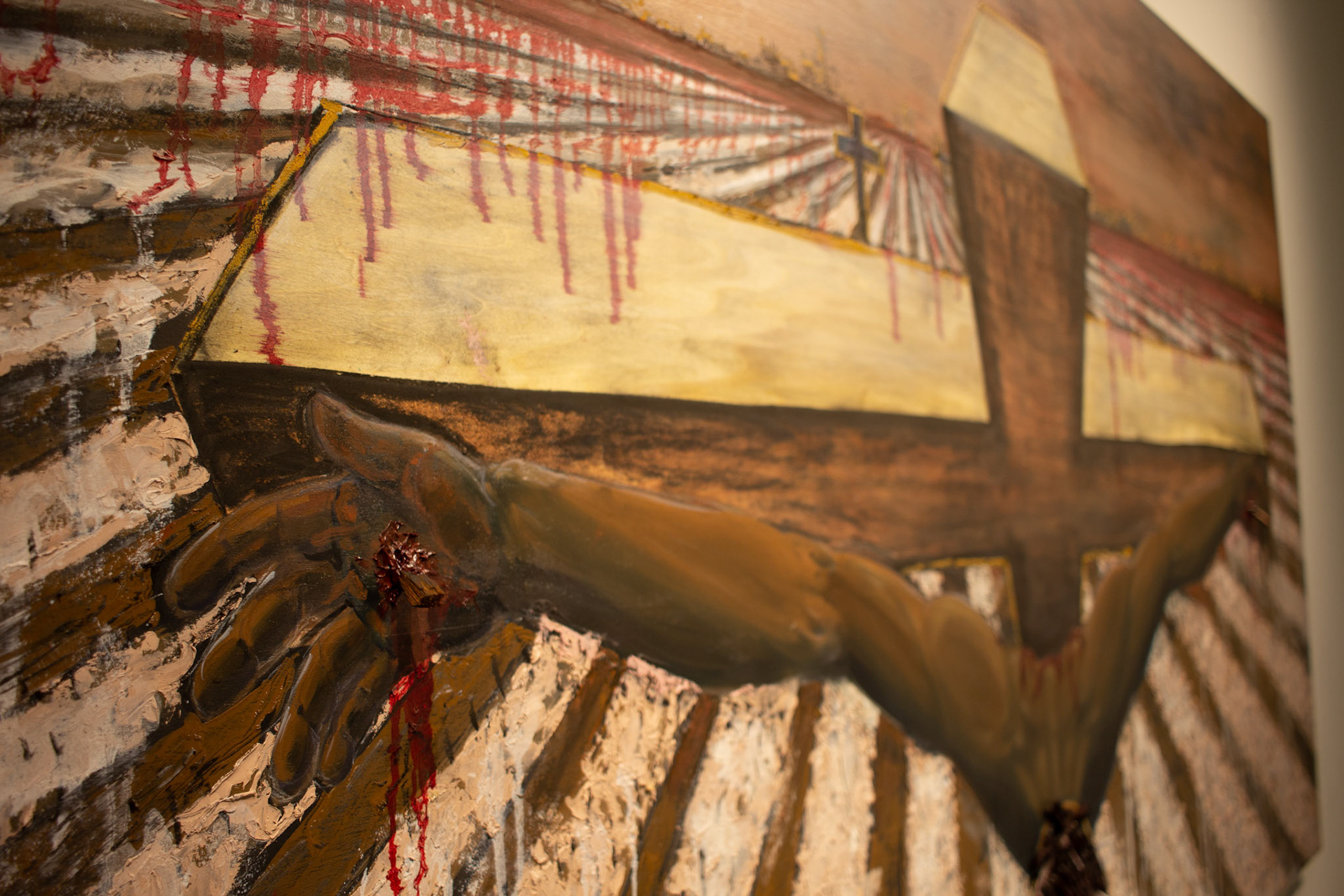


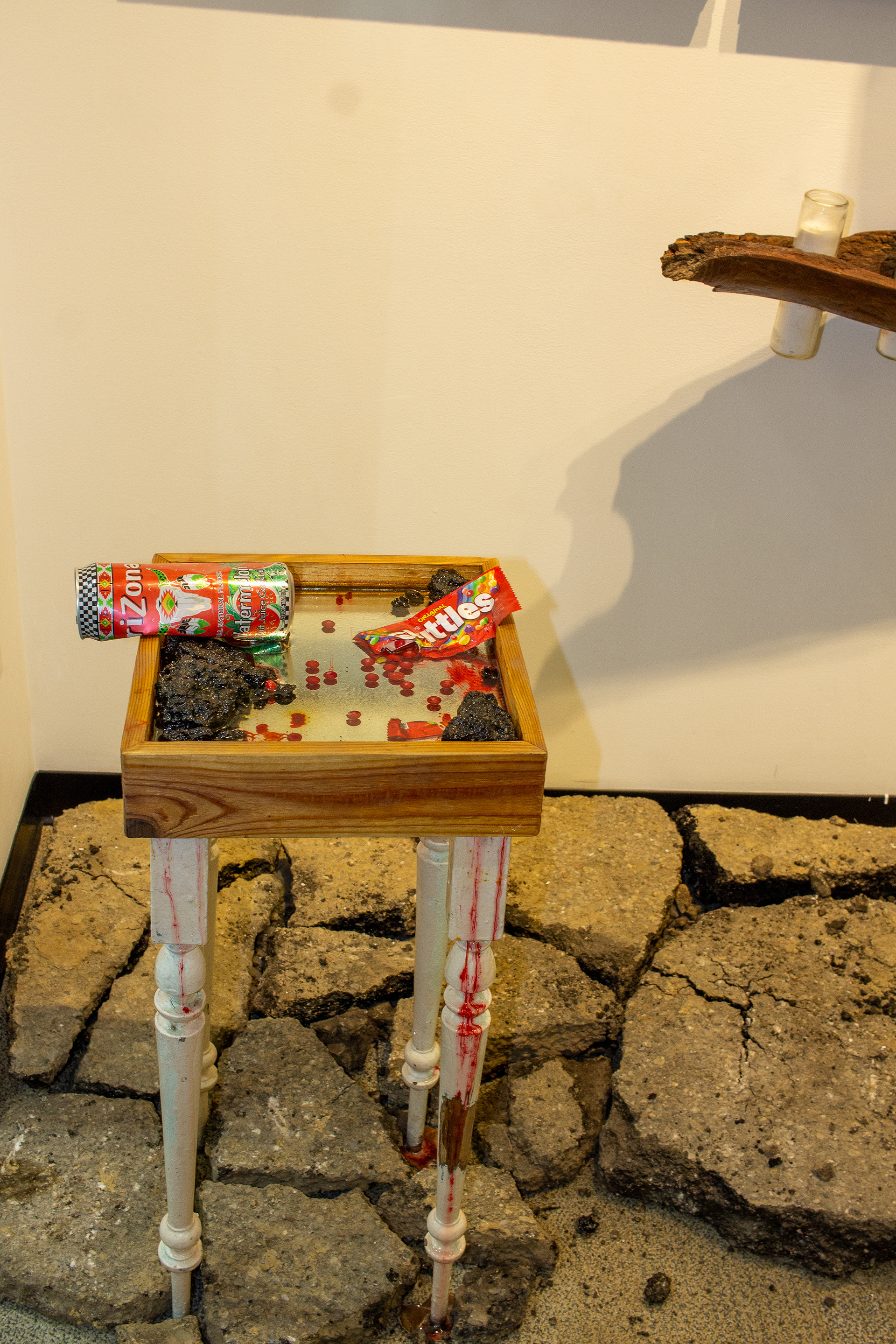
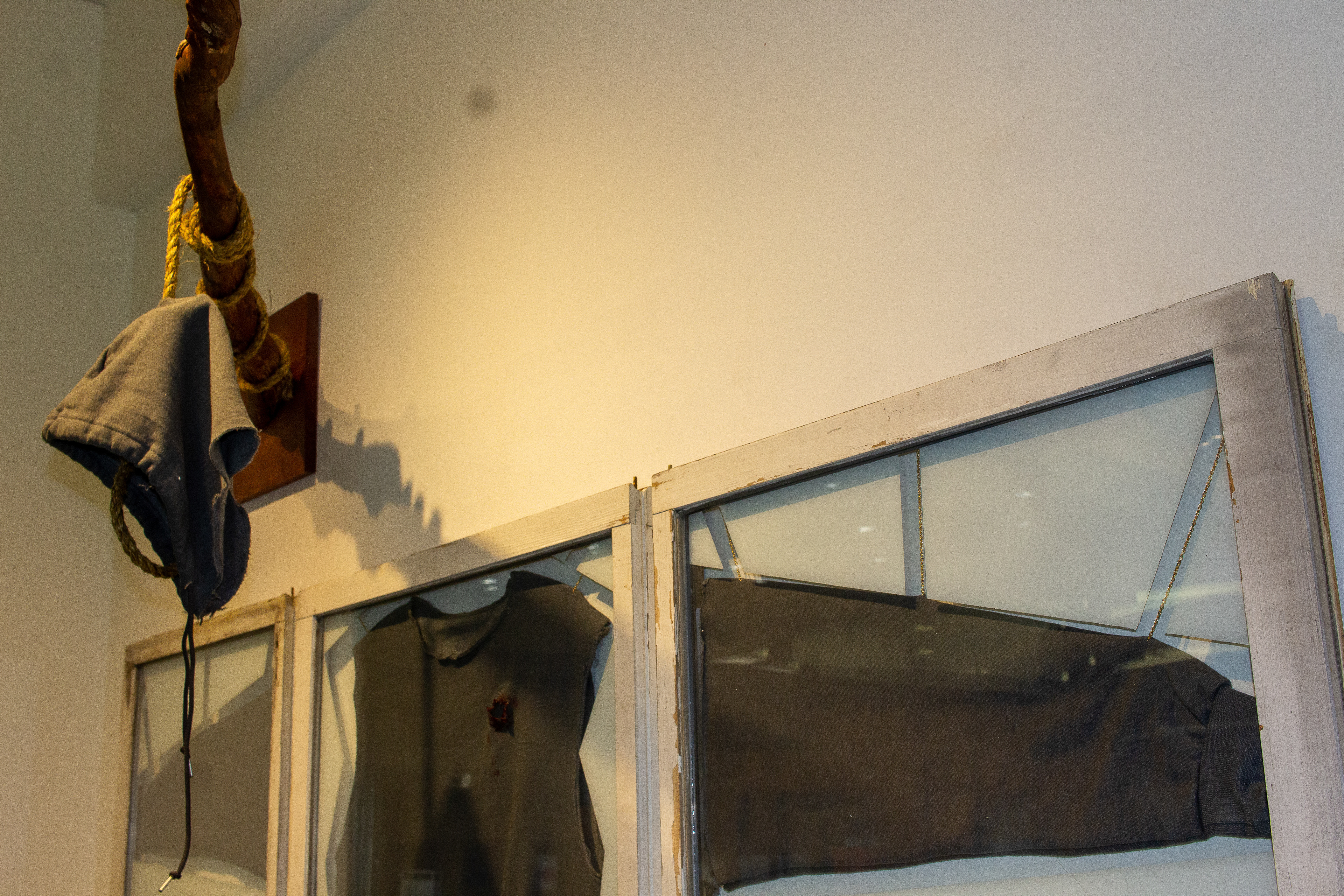
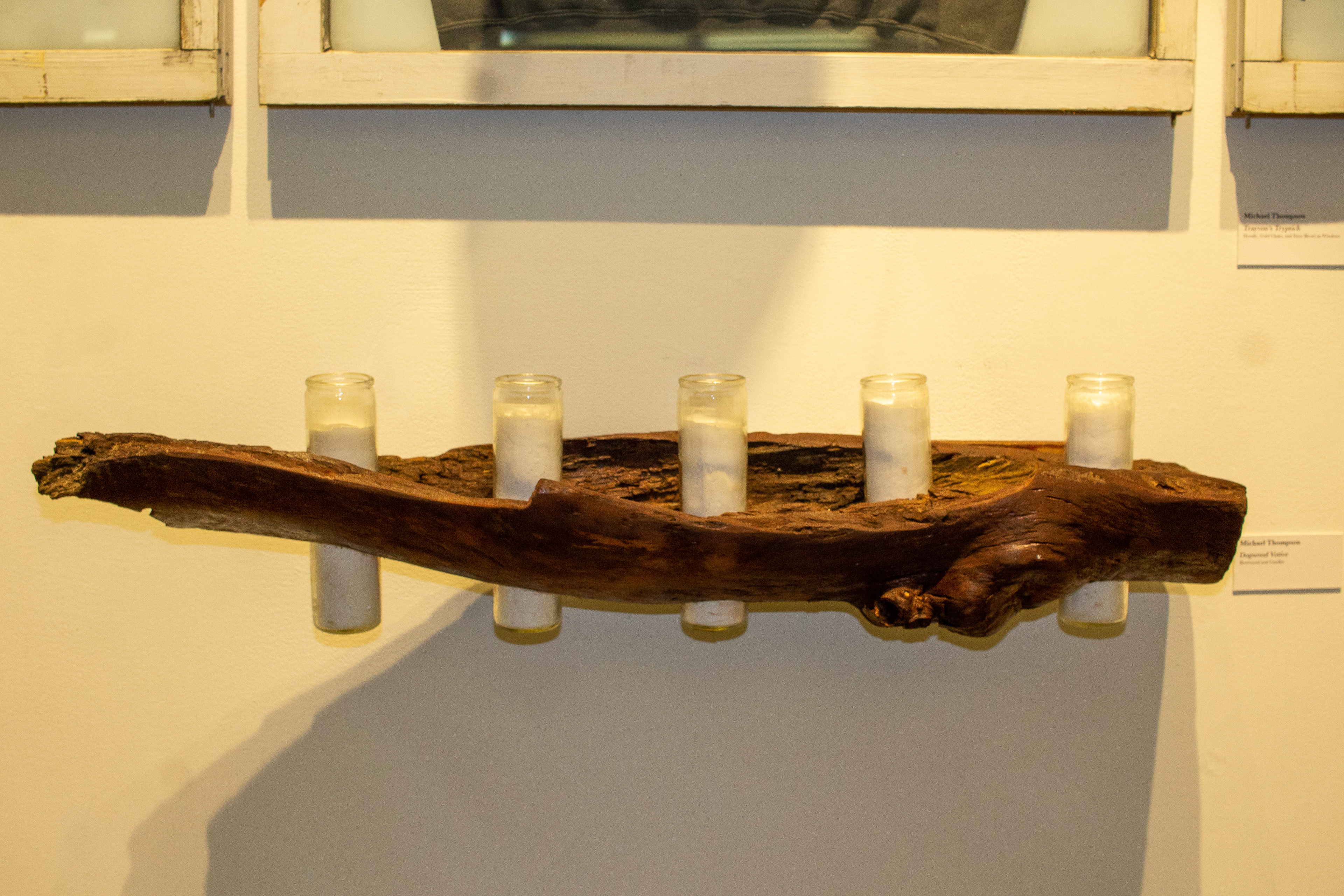
Strange Fruit is my coalescence and critique of two of the most gruesome events in human history, both of which have had a profound impact on my life: the Crucifixion of Jesus Christ and the lynchings of people who look like me. I have created a visual landscape that narrates both the plight and the resurrection of Christ as a black man in this in-depth examination of the parallels between these two events. Throughout scenes of western culture, the image of Christ has frequently been whitewashed and censored, removing the brutality of murder and simultaneously excluding large groups of people from relating to the most recognizable name in history. I have juxtaposed scenes and materials from the American past and present, biblical text, and religious art to draw the viewer into a space that both sanctifies and reframes the social conception of black men, Jesus Christ, and our respective authentic experiences which go unrecognized.
This exhibition is saturated with symbolism, from the materials I use to the positionings of figures in allusion to other great change-makers throughout our history. In “13” I have superimposed the 13th Amendment with the Last Supper in a composition depicting a chain gang, positioned in reference to Da Vinci’s masterpiece. This forces the viewer to see incarcerated men as saints, rather than criminals. All of the twelve apostles became martyrs for their faith, as black bodies have been martyred for a nation which perpetually dehumanizes them. By intwining the worlds of history and theology, I believe I can speak truth to power through both powerful, narrative imagery and subtle sowing of necessary introspection. Wood, gold leaf, coal, and asphalt woven together with oil paint, ceramics, refurbished objects, and audio to bring the viewer into a space that blurs the boundary between art and reality. Nearly every material and title holds specific meaning if you are inquisitive enough to explore it.
Nothing is beyond my range of inspiration as I draw in poetry, philosophy, nature, literature, patriotism, music, and forensics to weave together a full-bodied and direct fabric that intertwines our perspective of anthropocentric ecology and its complicated relationship to art. I frequently use lines from the song “Strange Fruit”, made famous by Billie Holiday who was highly persecuted for taking a stand against racial injustice in her day and age. Oil painting, sculpture, audio, and installation art are positioned in a manner that invites the viewer to question their role in such modern-day crucifixions, as well as experience the palpable and grotesque nature of events that are often redacted from art, religion, and popular culture.
As a visual artist and a poet, I spend a good majority of my life observing things. People, architecture, bugs, and literature have all become favorites of mine. By being an observer, I instinctually pick up on the patterns of both the visual ecosystem surrounding us, as well as the complexities of space and how we inhabit it. I often question what my role is as a creator in an ever-expanding global culture to be an instrument for positive change. Because of this, I often seek to draw comparisons between the major influences of my life and be the connective tissue for change that is often missing from public dialogue. Strange Fruit is an ode, a tragedy, an ignition, and a sacred place.
Michael Thompson, 2021

